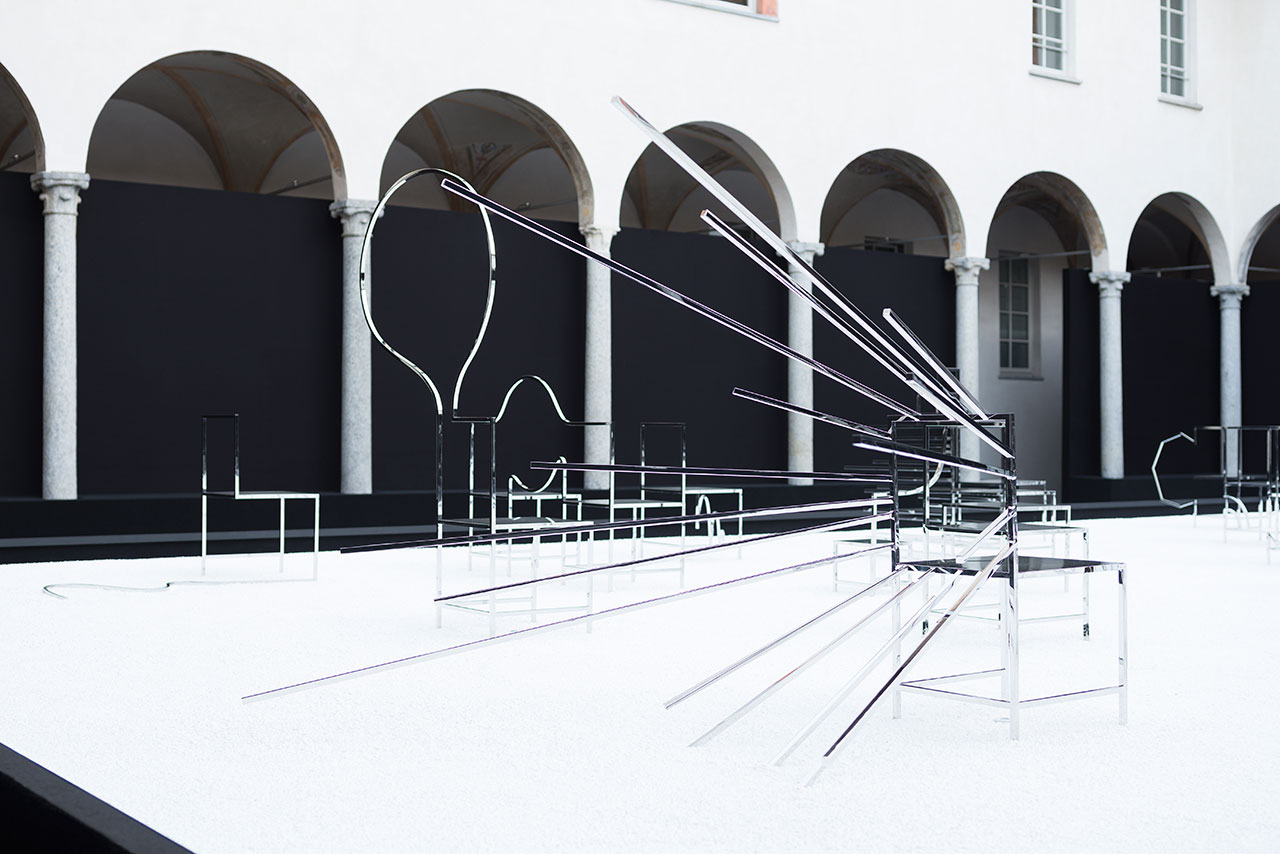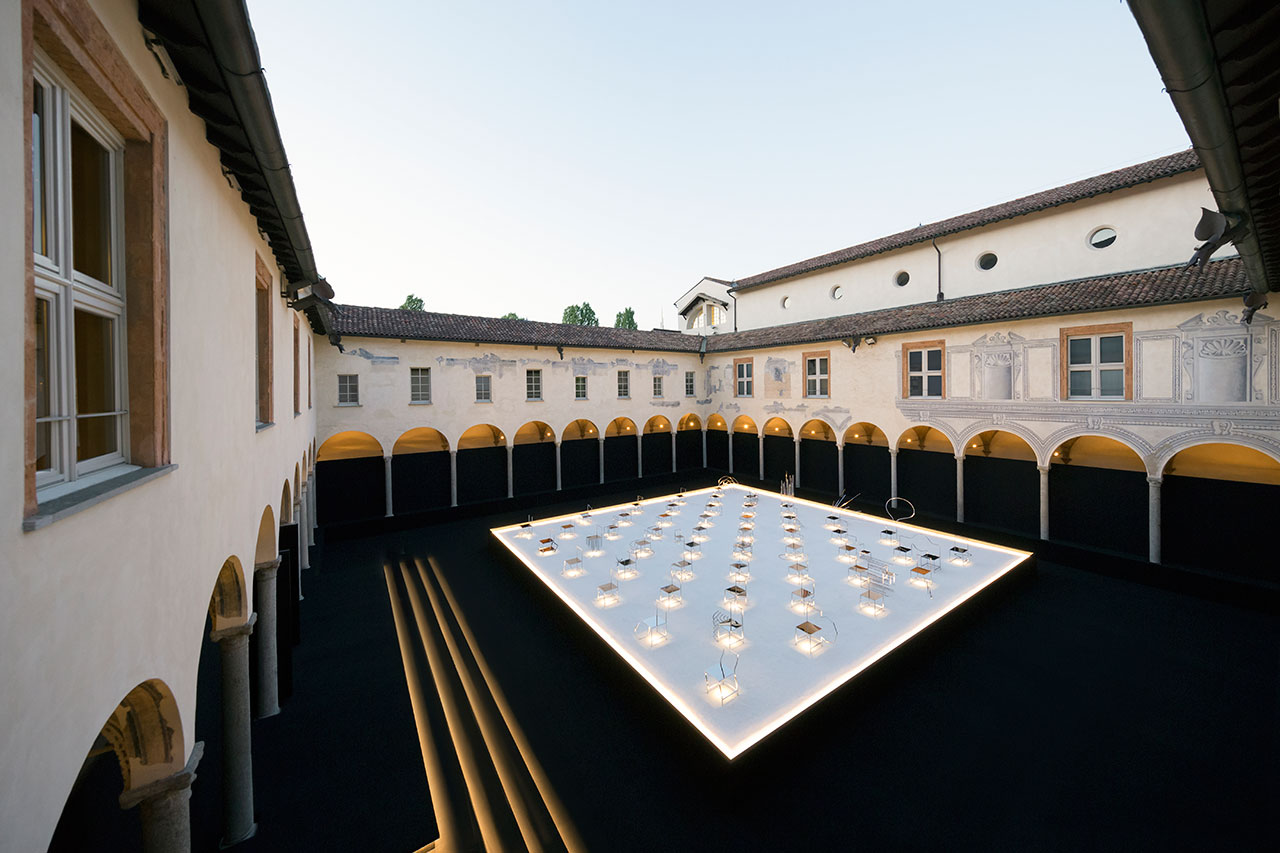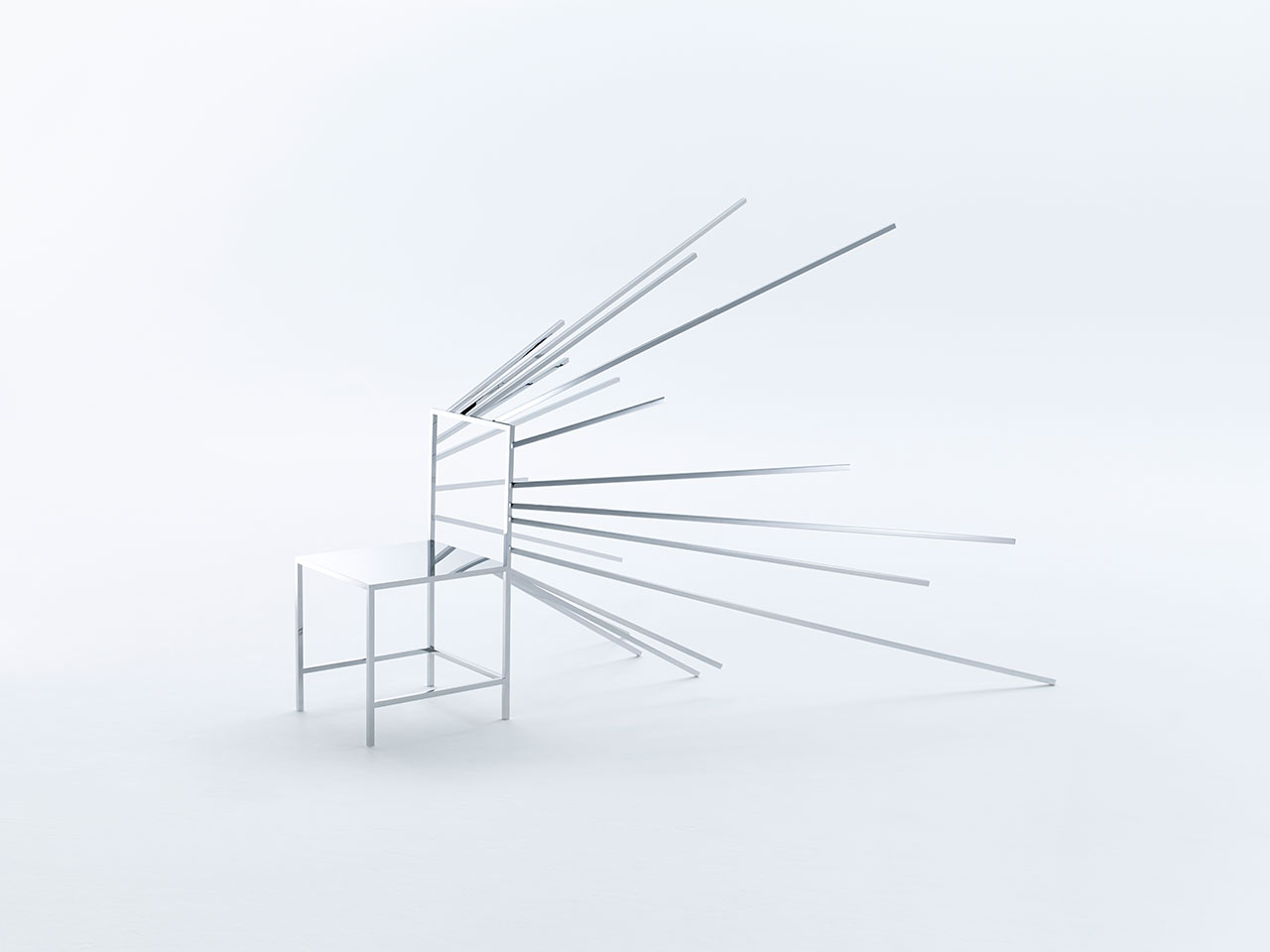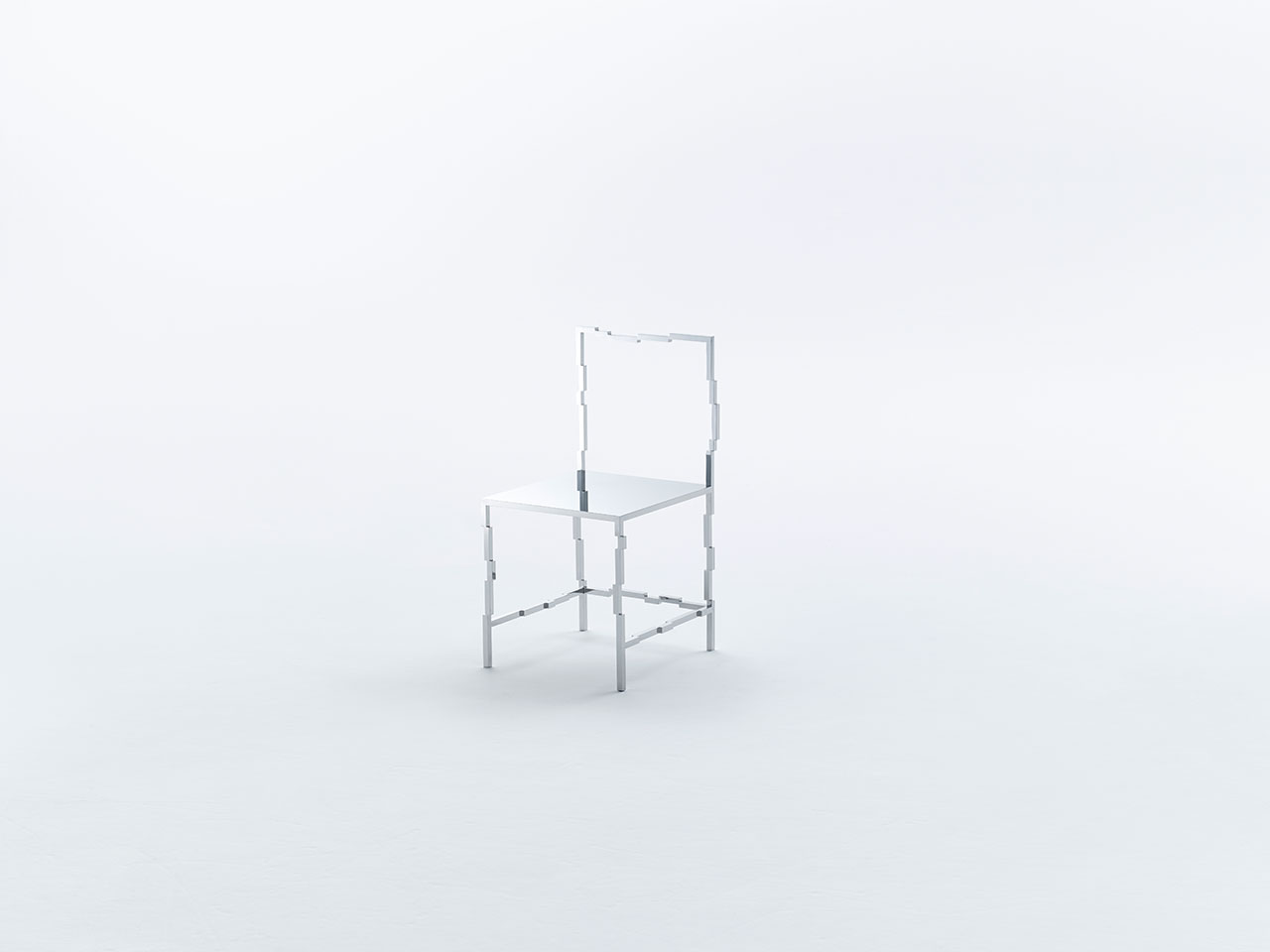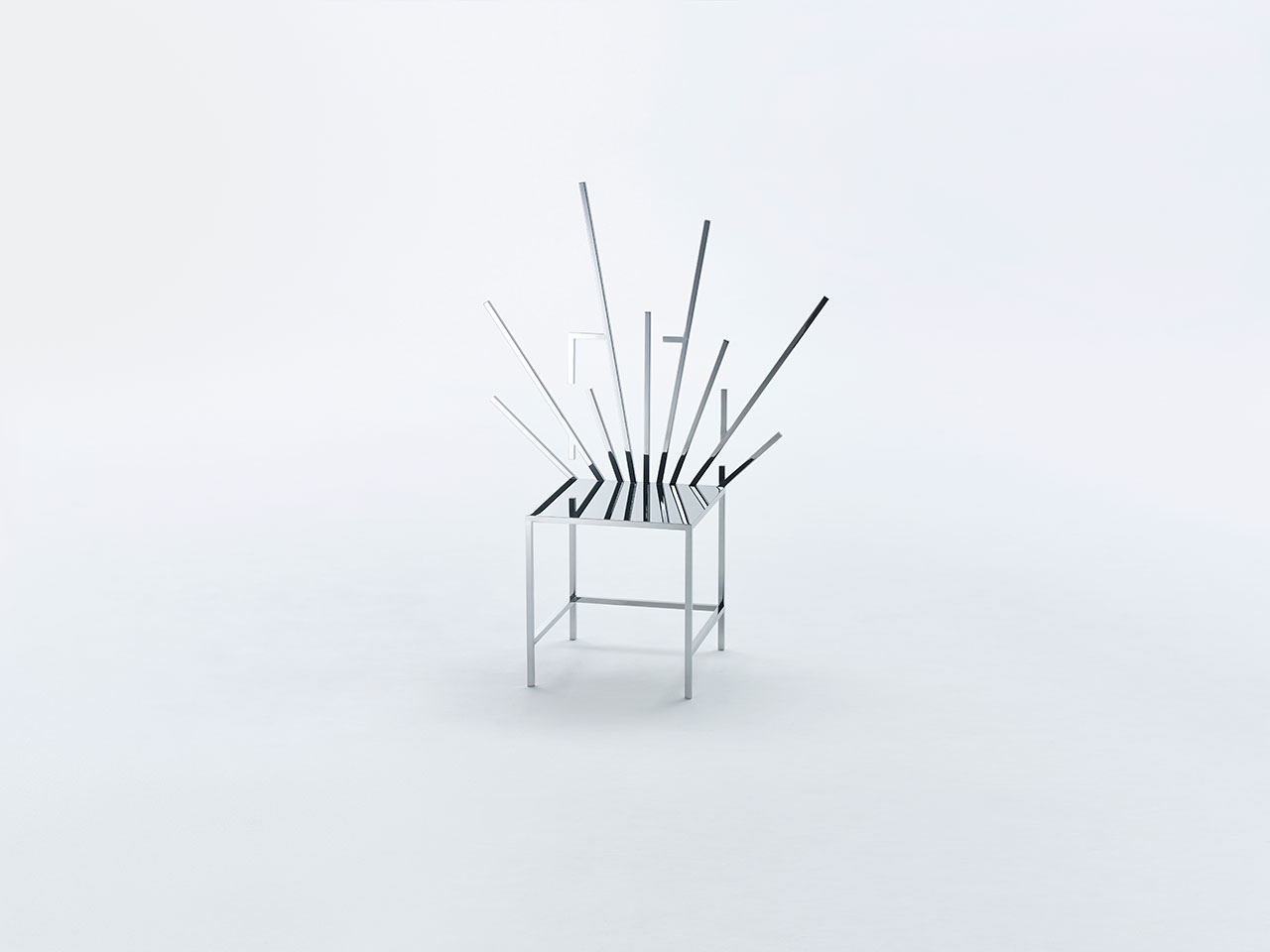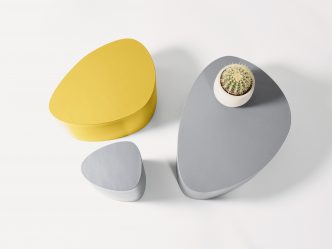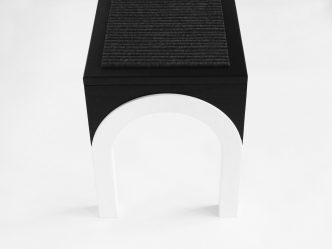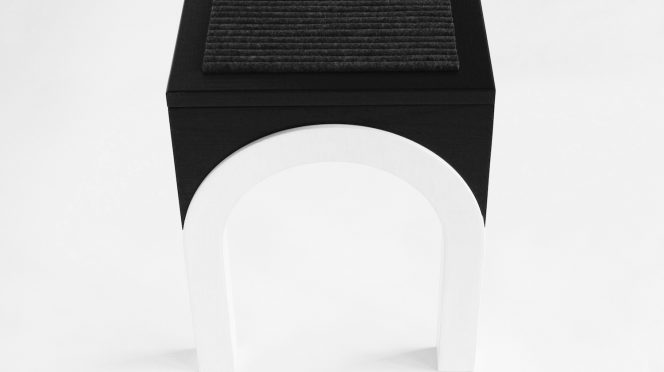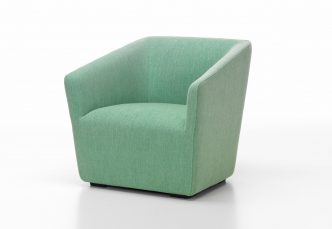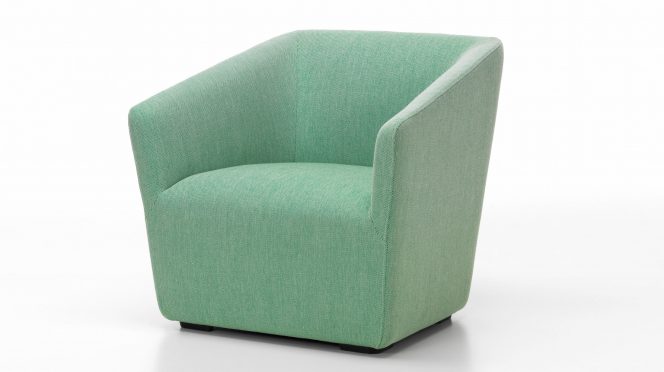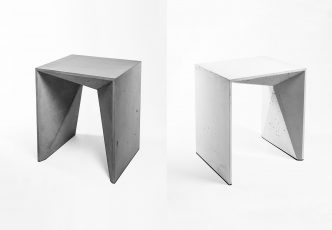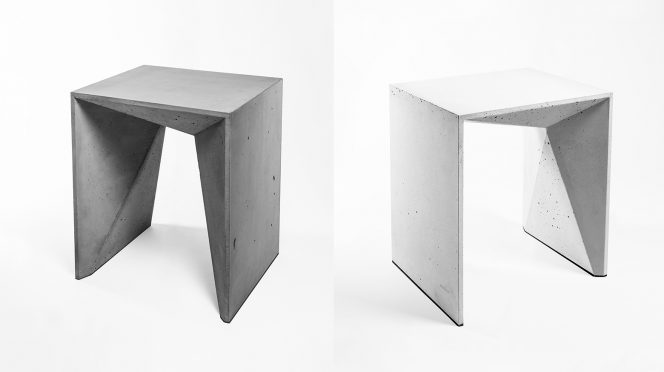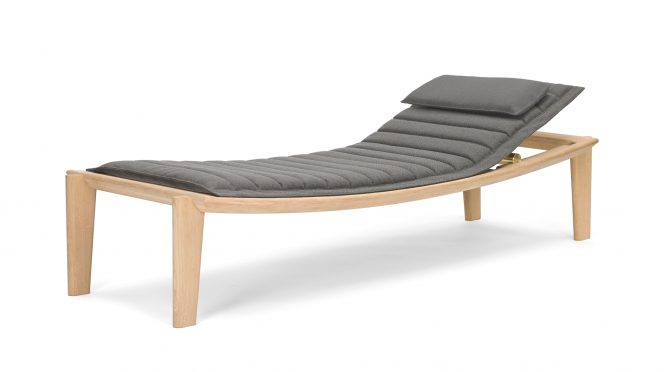A unique installation that spans the fields of art, furniture and graphic design, “50 Manga Chairs” is the creation of Japanese design studio Nendo, in collaboration with New York gallery Friedman Benda, which has made its debut in this year’s Milan design week at the Basilica Minore di San Simpliciano. Inspired by the iconography of manga comics, Nendo has created a series of 50 polished stainless steel chairs that while adhering to a minimal, modernist aesthetic nonetheless come alive in expressionistic bravado. For those that missed the exhibition in Milan, it will be re-staged at the Friedman Benda gallery in New York on September 8 until October 15.
Manga, deeply rooted in the Japanese culture dating as far back as the Edo period’s Ukiyoe prints, is characterized by “a high degree of flatness and abstraction” as Nendo explains, consisting of a series of lines that figuratively convey movement, sound or emotion. The chairs have been designed with the same visual vocabulary, each one acquiring a different personality. Using “effect lines” for example, they attain a sense of action such as swirling, zooming or sliding, whereas graphic symbols like tears and sweat provide them with emotional attributes or even speak through the use of a “speech bubble”.
The chairs, carefully lined up in a square grid, follow manga’s visual language of rectangular frames filling a single sheet thereby “conjuring up a sense of story”. The sequence is open-ended meaning visitors can make up their own storyline. Faithful to the uniformity of the original black and white comics, the designers have exclusively used a polished finish devoid of color or texture which, as they explain, “generates new spatial layers as the mirror surfaces reflect the real world”.
In Milan, the achromatic, manga aesthetic is amplified by the way the designers have staged the installation at the historic site of the Romanesque basilica. Occupying the courtyard of a former convent adjacent to the church, the chairs sit on a central white platform, slightly raised amidst all-black surroundings, shut off from the cloisters all around by black panels between the columns. Apart from placing the chairs center stage, this scenography also had the effect of horizontally slicing the courtyard in two, establishing a visual flatness on the lower half akin to the comic book pages, allowing visitors to be transported into their universe.



